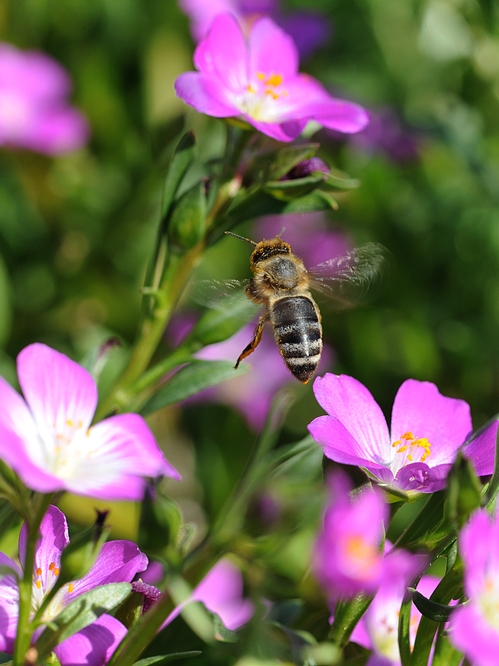Redmaids aren't red.
They're purple-petaled with white centers and yellow stamens.
The California native wildflower (Calandrinia ciliatais) from the purslane family (Portulacaceae) blooms from February through May.
Farmers who grow baby spinach and other crops consider it a weed. Honey bees don't. It's a food source that helps them build up their hives in the spring.
If you ever see a patch of redmaids, you'll surely see bees foraging among the bright blossoms.
There's a patch on Hutchison Drive, near the Harry H. Laidlaw Jr. Honey Bee Research Facility at the University of California, Davis. New World Carniolan bees reared by bee breeder-geneticist Susan Cobey, manager of the Laidlaw facility, can be seen foraging there.
A patch of redmaids and a bee posse.
Attached Images:

Field of Redmaids

Covered with Pollen

In Flight